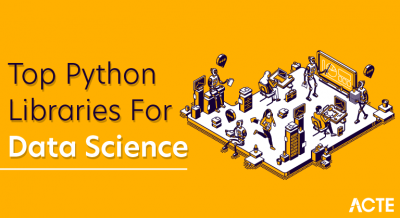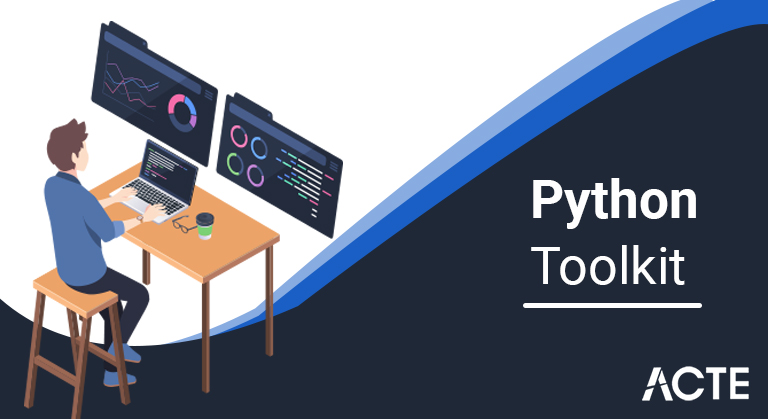
Toolkits are programming libraries that provide computational building blocks for solving specific programming problems as well as general methods that can be customized to create innovative new tools and workflows.
- Introduction to Python toolkit
- Most Popular Python Libraries And Toolkits For Desktop GUI Applications
- Features of python toolkit
- How to set up Command Prompt for Python in Windows10?
- Python Prompt Toolkit 3.0
- Installation
- Toolkit
- Benefits of using python toolkit
- Conclusion
Introduction to Python toolkit:
PythonToolkit (PTK) is an interactive python. It was originally designed to provide an anaconda-based environment for scientists and engineers in use as well as numpy, scipy and matplotlib python packages. However it can also be used as a standard interactive python especially for interactive gui programming. Built next to the console window with a simple python source editor and Tool plugin tool so that additional features and support for python packages can be easily added.
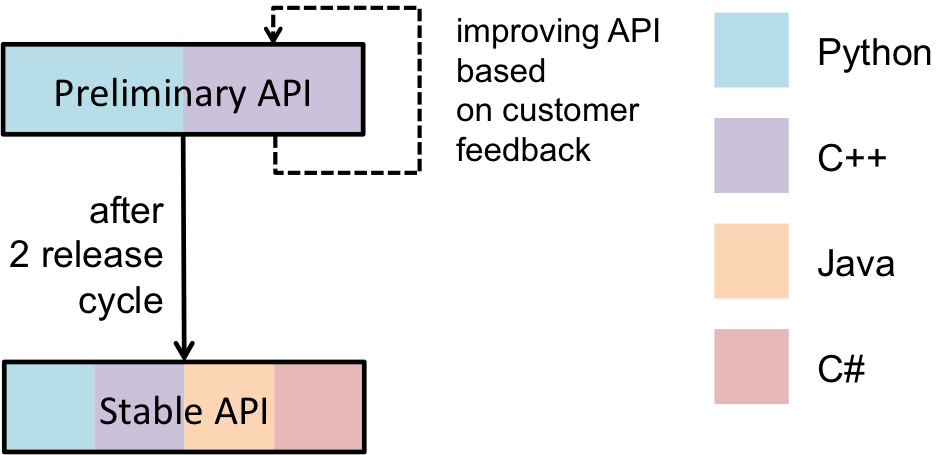
- It gives you complete control over the output of the table by allowing you to adjust its settings
- Inefficient tables may be pulled down, depending on their accuracy
- Database data for pandas design table
- Various table formats such as CSV, Json, Excel, and HTML can be exported to Camelot.
- >>> import Camelot
- >>> tables = Camelot.read_PDF (‘xyz.pdf’)
- >>> tables
- >>> tables.export (‘xyz.csv’, f = ‘csv’, compress = true)
- Tables [0]
- >>> tables [0] .parsing_report
- {
- ‘Accuracy’: 99.06,
- ‘White place’: 12.12,
- ‘Order’: 1,
- ‘Page’: 1
- }
- Support for mouse, keyboard, TUIO and OS-specific multimedia touch events.
- Only uses Open GLES2, based on vertex Buffer and shaders.
- More widget availability
- Can be used to design custom widgets
- from the Kivy.app Import App
- from the Kivy.Uix.insport button
- Class Test Application (Application):
- def build (self):
- Replace button (text = ‘Welcome to python’)
- Test Program () .run ()
- Glib: A low-level basic library that builds GTK building blocks to provide C
- Pango: A text rendering structure, which focuses on categorization
- Cairo: A 2D picture library that supports a variety of output devices
- TK: A library with a set of interactive areas that provide access to tools such as screen readers, amplifiers etc.
- import gtk
- def create_window ():
- window = gtk.Window ()
- window.set_default_size (400, 300)
- window.connect (‘destroy’, gtk.main_quit)
- label = gtk.L label (‘say hello to photos’)
- window.add (label)
- label.show ()
- window.show ()
- create_window ()
- gtk.main ()
- Console window supported by multiple python translators (Engines)
- Engines are unit external processes so every engine is totally separated from the others and therefore the visible PTK connective.
- Collaboratively piece completely different graphical user interface tools (wxPython, TkInter, pyGTK, pyQT4 and PySide).
- Builtin python program integrated with tools and editor.
- Automatic completion of items and tips.
- Editing multi-line commands.
- Command history (previous / next and seek for less typewritten commands).
- A simple editor for code testing and writing or daily work.
- Set, edit and delete program interruptions mistreat the editor.
- An expandable matlab name / space browser tool that may be expanded to support new sorts and categories.
- System manager tool to simply amendment current in operation index and manage python search ways.
- Python object testing tool that shows docstring object, code, and values.
- GUI viewers for python information sorts – a lot of is additional easily!
- Python is an associate import / export tool for storing and uploading information simply – new importers / exporters are added!
- You can see Python3 put in on my pc.
- If Python isn’t put in on your pc, it should be put in the way to Install Python on Windows?
- To try to do this merely open cmd and kind the python. If you see any version of the python it suggests that it’s already set.
- You can see when writing the python nothing happened. Therefore, the python isn’t set to cmd however.
- While not gap the app click “Open file location”.
- If you probably did not notice the choice, right click on the app and you may tumble.
- Click “Open File Location”
- After the gap in the file location copies the trail.
- After gap the menu click on “Natural Variables”.
- In the “Edit System Variables” menu, click “New”, then paste the file location you derived and click on OK. Now shut the surroundings menus with a OK click and congratulations, we’ve created electronic communication for python.
- Open electronic communication and type “python” and hit Enter.
- You may see the python version and currently you’ll use your program there.
- Highlight input syntax whereas typewriting. (For example, with Pygments lexer.)
- Multi-line input piece of writing.
- Advanced writing.
- Select text to repeat / paste. (Both Emacs and Vi designs.)
- Cursor and scroll mouse support.
- Default suggestions. (Like a fish’s shell.)
- There is no state of the globe.
- Like the reading line:
- Both Emacs and Vi key ties.
- Undo and forward advanced search.
- Works well with duplicate Unicode characters. (Chinese input.)
- Pure Python. Works on all Python versions beginning in Python three.6. (Python 2.6 – 3.x is supported on prompt_toolkit two.0; not 3.0).
- Works on UNIX, OS X, OpenBSD and Windows operating systems.
- Lightweight, that is only hooked into Pygments and wcwidth.
- No speculation regarding I / O is formed. Each prompt_toolkit application ought to run on a telnet / ssh server or asyncio method.
- Installation
- pip enter the prompt_toolkit
- With Conda, do:
- install conda -c https://conda.anaconda.org/conda-forge prompt_toolkit
- Getting started
- A very simple example of a library can look like this:
- from the prompt_toolkit import command
- if __name__ == ‘__main__’:
- answer = prompt (‘Give me an input:’)
- Print (‘Said:% s’% reply)
- Windows, Linux, macOS, Solaris, NetBSD, OpenBSD, AIX, FreeBSD, Cygwin
- Python supports the following formats:
- Intel x86, PPC64, ARMv7, s390x
- Python script is created line by line without the need to integrate man-written code into machine instructions first like other programming languages.
- Python offers many advantages over other programming languages:
- It can be run on several platforms such as Windows, macOS, Linux and so on with Python installation on the machine. There is no need to reassemble the system.
- As line-by-line, it is easy to make changes to Python code, apply modified code and see results immediately. But some editing languages need to be reassembled and reused after making changes.
Most Popular Python Libraries And Toolkits For Desktop GUI Applications:
1 | Camelot (Library)
Camelot, a Python command line tool library, has made it easy for analysts to extract data tables from PDF files, often without the precise representation of a table format, making it difficult to produce analysis tables. Camelot provides a way to send and receive documents through various configuration devices, applications, and network communications.
Key Features
Sample code
2 | Kivy
As an open-licensed MIT Python library, Kivy is used to design mobile applications and software for multi-touch applications, including user-friendly interaction. Kivy is specific in defining user interaction and interaction.
Key Features:
Sample code
3 | PyGTK (Graphics interface Tool Kit)
PyGTK is a free software licensed by LGPL. It is a multi-forum toolkit that can be used to create image connections that provide a complete set of widgets suitable for projects from a single tool aimed at completing an app collection.
Key Features:
Sample code
Features of python toolkit:
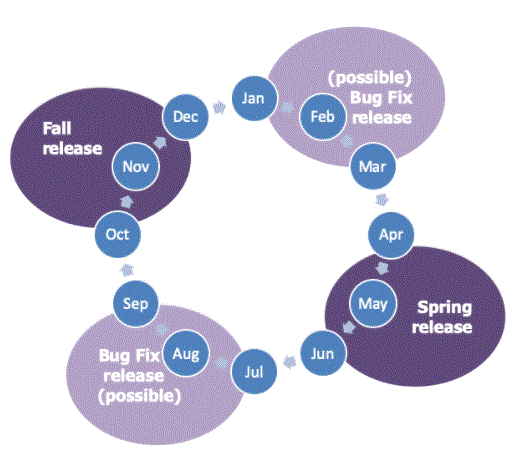
How to set up Command Prompt for Python in Windows10?
We all understand that these days Python is one in every of the foremost well-liked writing languages among all. whereas putting in Python, one IDE known as IDLE is additionally enclosed. Through IDLE we are able to record and run our programs. However, we are able to conjointly use python programs in CMD or electronic communication as CMD is the default instruction translator for Windows.
However there’s a desire to line the default flexibility within the windows to use the python within the instruction. the subsequent area unit the steps to feature Python surroundings to Windows on the way:
Step 1: To line up Python in CMD we want to examine if Python is put in on your machine or not. By doing this, attend the Windows search bar and hunt for python. After you notice a python within the result you’re able to go.
Step 2: Currently check if the python is already set to electronic communication or not.
Step 3: Currently open the Windows search bar and hunt for “do nothing”.
Step 4: Currently right-click on “IDLE” and click on “Open File Location”
Step 5: Currently attend the Windows search bar and appear for “Location Variables” and open it.
Step 6: Currently check if it works.
Python Prompt Toolkit 3.0:
Prompt_toolkit may be a library for building a strong interactive program line and end-to-end applications in Python.
It may be a strictly advanced Python replacement for the antelope learning line, however it also can be wont to build full screen applications.
Other features:
Works everywhere:
Installation:
About Windows support
The prompt_toolkit is a shortcut, and everything you build on top should work well in both Unix and Windows applications. Windows support is best for the latest Windows 10 builds, where the command line window supports the vt100 escape sequence. (If not supported, we return to running the Win32 APIs with color and cursor movements).
It is noteworthy that the implementation is “the best effort possible.” Both Unix and Windows terminals have their limitations. But generally, the Unix experience will still get a little better.
For Windows, it is recommended to use cmder or conemu.
For more complex examples, see the list of examples. All examples are selected to show only one item. Also, do not be afraid to look at the source code. Getting a quick start can be a good start.
Philosophy
The prompt_toolkit source code should be readable, concise and efficient. We prefer short jobs that focus on one job and that are clearly defined input and output types. We prefer preference to inheritance, because inheritance can lead to more work on the same thing. We prefer non-convertible items where possible (items do not change after launch). Reusable is important.
We completely avoid having a changing world situation, there should be more independent situations of the same code in the same process. The structure should be made of layers: the lower levels apply to older works and the data structures that provide – if properly integrated – all possible flexibility; while at a high level, there should be a simple API, ready to use and sufficient for most operating conditions. Thinking about algorithms and efficiency is important, but avoid doing well ahead of time.
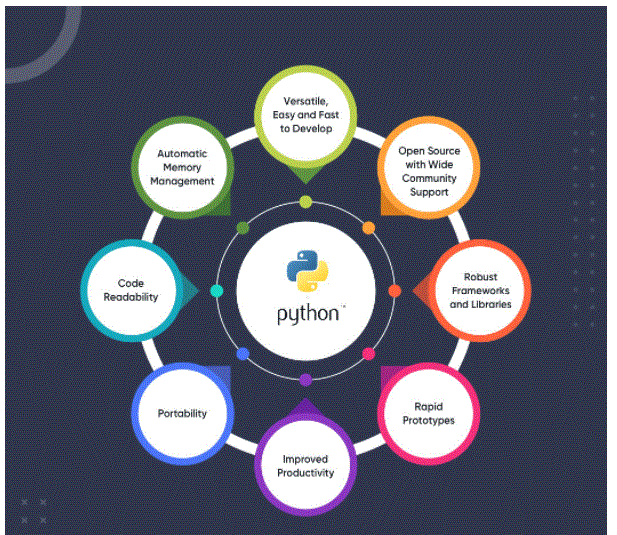
Toolkit:
Toolkits are editing libraries that provide arithmetic building blocks to solve specific programmatic problems and customizable methods to create new tools and workflows. OpenEye Toolkits provides technology for solving a wide variety of cheminformatics and molecular modeling problems.
OpenEye Toolkits are delivered as APIs for 4 supported languages: C ++, Python, Java, and C #. APIs are stable between versions and across forums. This allows users to write toolkit programs that will be able to work for many years. The release of a new toolkit often includes bug fixes and key performance improvements. Users can also combine against newer versions of the toolkit to reap the benefits of important work development.
To speed up the delivery of new technologies, APIs for new applications may be released as Basic APIs. Preliminary API is a set of new fully tested but potentially limited real-world applications. If so, it is important to gather feedback on the usability of the work before committing to the final, consistent API design. The original APIs may change based on this user response; will stabilize after 1 or 2 release cycles. The first APIs will sometimes be made available in a small set of supported languages and forums.
_images / toolkits-API.png
OpenEye Toolkit API
Strong API
Fully developed, documented, and tested tools are considered stable. The API descriptions of these tool kits will be the same in all languages and forums and will not change between the release of the toolkit.
The code written in earlier versions of the tool kit will integrate and work with newer versions. This allows users to easily upgrade to new versions without having to worry about breaking the legacy code
Benefits of using python toolkit:
1. Code is Easy to Read and Manage
The evolving app should focus on a strong and powerful language that is easy to learn, debug, review and manage. Python combines these attributes as well as frameworks and resources.
The Python built-in code base allows for quick upgrades and code storage for developers. They can divert their valuable time from productive activities rather than writing additional code.
Python syntax often uses English words to make the code readable and flexible to suit the changing needs of customers. Even if real engineers are no longer in the project, newcomers can learn and understand the original code to incorporate new requirements.
2. Support for multiple Planning Paradigms
Codes can write pure and logical code using Python text regardless of project size and scale. As it supports many programming concepts, Python can be used to build complex applications easily. Deputy:
Process Planning
This is based on procedures and patterns that include calculation measures. The main purpose of this method is to identify system problems, break them down into smaller parts and work towards achieving the larger goal.
Focused Planning
Object-oriented planning begins with planning and drawing a plan. Items, classes and activities are being built, data forums and activities are being built before the start of the product development phase.
Operating system
Here engineers build all the features in a mathematical format that involves solving complex expressions. Focusing on the operating system is the final result rather than the calculation method.
3. Compatible With Multiple Programs and Buildings
Python provides support for all popular formats and applications. Python supports the following applications:
4. Large General Library
Python boasts a typical library compared to other languages. Its library has a few modules, tools, and features that can be used without having to write additional lines of code. Developers should not worry about low level details and can focus on the concept of the program. The code provided by the Python library is preserved and reusable. It is also a well-designed, relaxed, reliable code that can be used in any app.
5. No License required
Being an open-source language, no license fees are essential to using Python making it a very popular choice for companies. It offers a wide range of tools, libraries and frameworks that significantly reduce development time and costs.
Some examples of Python web frameworks are Flask, Pyramid, Django, Bottle and cherrypy. These frameworks accelerate web application development.
Some examples of Python GUI toolkits are PyQT, PyGUI, PyJs, and Kivy. These tools accelerate the development of the desktop GUI application.
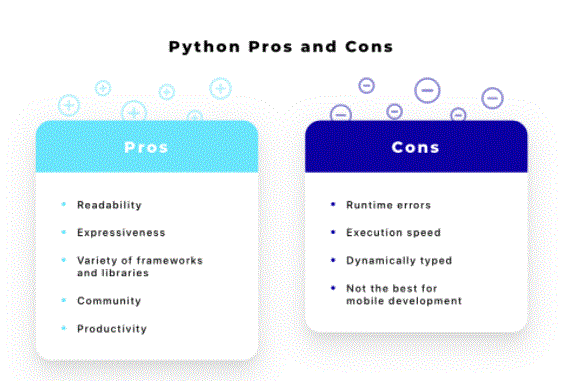
Conclusion:
Prompt_toolkit is a library for building a powerful interactive command line and end-to-end applications in Python. It can be a purely advanced Python replacement for the GNU learning line, but it can also be used to build full screen applications. Other features: Syntax highlighting for input while typing.
Open source editors around the world are constantly developing Python and open libraries and tools, making language truly powerful, user-friendly and easy. As leading financial institutions and companies adopt cloud-based cloud management strategies and beyond, Python has become an important catalyst for global business transformation.
learn how to get started with the Python GUI program. Tkinter is a mandatory choice for the Python GUI framework because it is built into a standard Python library, and it is not easy to apply this framework.



